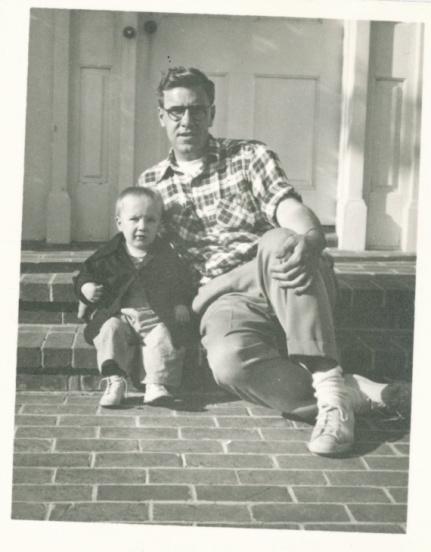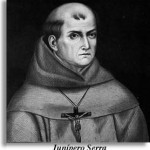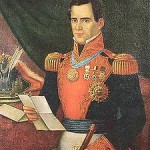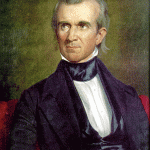Palos Verdes Real Estate
Home"Palos Verdes Resident since 1947"
About Palos Verdes

This is me with my dad on front steps of 3405 Via Palomino in 1949. I’m on the left
I suppose the main thing that sets this information apart from other accounts you may read is that it is all written by me from personal knowledge or recollection, which one can do if one has lived here since 1947. I didn’t have to look any of this stuff up, no cut and paste. There is lots of information about Palos Verdes on the web, so my intent is not to just reiterate that, but rather to give you my personal interpretation as a long-term resident. You may find my article The Things You Always Wondered About Palos Verdes interesting. There also was a new (2014) video featuring many of us early PV residents sharing their memories of those days. Many of these people have now passed away — this is a treasure trove of first-hand memories.
If you’d like to skip ahead to relatively recent (say, after WW 2) and current information about any of the four cities on the Palos Verdes Peninsula, please click one of the links below. Otherwise, we’re starting with the Cretaceous Era (the Mesozoic would just be too early).
During the Cretaceous (didn’t believe me, eh?) Palos Verdes was one of the Channel Islands back when sea levels were higher and the Los Angeles Basin was a bay. When I was a kid (shortly after the Cretaceous) we used to dig for the teeth of sharks that had lived during this period. If one looks at the Palos Verdes Peninsula from the North across the western slope of the hill, one can see the remnants of shorelines that once existed as the oceans receded — they show up as plateaus. You have to be a couple of miles away to see it, but I’m sure you’ll see it.
Fast forward to the late 17th Century, and Spain was attempting to hold onto her empire, which she always seemed to operate on a shoestring. The mid 18th Century saw a string of missions and forts built in California, the most famous
missionary being the Jesuit Father Junipero Serra. The idea of the missions, apart from indoctrinating the Indians, was that they were one day’s walk apart, so that a traveller could stay at them as he progressed north or south. Near these missions was usually some sort of military outpost manned by 20-50 soldados (soldiers) — just enough to keep any Indians who didn’t want to become Catholics in line, but not enough to fend off any serious military challenge by a European country.
As Spain’s fortunes (in every sense) declined, aided by the fact that Spain’s approach to her colonies had always been simply to mine them for as much plunder as they could, with little thought to the indigenous people, her colonies in the New World began to fall either to locals who had gotten their act together, or to other European powers. US interest in California got a boost when, in 1803, President Jefferson bought the Louisiana Purchase from Napoleon, who needed the money to finance his ambitions. Spain had obtained it from France at the end of the 7 Years’ War (French and Indian War to us), which ended in 1763 with France’s defeat. It was then ceded back to France in 1801 by secret agreement in return for some land in Tuscany. Seems no one really wanted it. This, by the way, explains the polyglot architectural and cultural influences in New Orleans. England made a run at it in 1815, but Andrew Jackson took care of that — “In 1814 we took a little trip” — thank you Johnny Horton.
Between 1810 and 1821 Mexico began flexing her muscles, and finally succeeded in gaining her independence from an over-stretched Spain in 1821. Mexico was corrupt and broke . . . the perfect atmosphere for a dictator to take control.
And who should show up but Antonio de Padua María Severino López de Santa Anna y Pérez de Lebrón, the idea apparently being that any opponents were so out of breath after saying his name that they were easily overcome — so let’s call him Santa Anna. In the tradition of Mexican dictators, Santa Anna was corrupt. In an effort to hold onto what became Texas, Mexico offered free land to anyone who would settle there (sort of a Mexican version of the Homestead Act), most of whom were Americans. Surprise, surprise, by the 1830’s, after the American emigres had developed the land, Mexico was disputing the title to it and the Texians (as they were then called) rose up in revolt. Remember the Alamo? That was one of Santa Anna’s attempts to subdue them. With Santa Anna’s defeat in 1836 by Sam Houston at San Jacinto, Texas won her independence via the Treaty of Velasco and became the Lone Star Republic.
Fast forward to 1840. Santa Anna proved to be a sore loser and, along with the Comanches, was still harassing the Texians, who implored their recent homeland, Los Estados Unidos, for help. While President John Tyler laid the groundwork, it was James K Polk who took the initiative. In an effort to defuse the situation short of war, Polk offered Santa Anna (who by then had returned to power) $53 million plus a $2 million bribe for everything from the former
Louisiana Purchase to the Pacific which included [blare of trumpets] Palos Verdes. And you thought I’d never get to it. Santa Anna turned down the $53 million, kept the bribe, and fired up the Mexican Army. Polk (probably the most under-rated President in US history) sent two armies (Winfield Scott and Zachary Taylor) who made short work of Mexico. By the Treaty of Guadalupe Hidalgo in 1848, Mexico ceded to the US basically what Polk had offered to pay for . . . and the US then paid Mexico around $20 million for it, Polk deducting the cost of the War from the previous offer. Pretty generous, huh?
In less than a year the Americans discovered gold in California — gold that had been sitting there the whole time Spain and Mexico had owned it, which resulted in a huge migration to the gold fields and sufficient population so that, in 1850, California was admitted to the Union as the 31st State.
Fast forward again — Civil War, late 19th century industrialization, Spanish-American War, automobile invented, World War 1, Wilson dies — OK stop. Just after World War 1 some New York developers/financiers decided Palos Verdes would be a pretty nice place for a high-end residential development. Led by one Frank Vanderlip, they had bought the Peninsula in 1913 from a guy named Bixby, who had acquired it from the Sepulvedas, the last of the beneficiaries of Spanish land grants, in the 1880’s.
Here is where the stories of the 4 Peninsula cities diverge, so go back up to that list above, and click on Palos Verdes Estates, which was the first city to be developed. Generally tho, things moved along at a leisurely pace until after World War 2, when the returning servicemen married their sweethearts and many, who had tasted the pleasures of Southern California while in the service, moved here. My parents were among them, moving to PV in 1947. I now pick this up in a discussion of the development of the 4 cities on the Hill, so click on one of the links above, and I look forward to your phone call.



